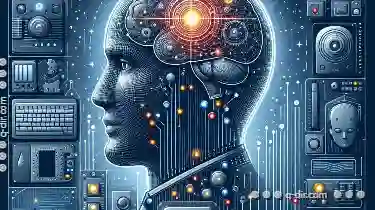This blog post will explore the cultural impact of easy copying on originality, examining how this practice affects creativity, intellectual property ...
 rights, and our understanding of what constitutes "originality. ". In today's digital age, the ease with which we can copy files and folders has become a double-edged sword when it comes to originality.
rights, and our understanding of what constitutes "originality. ". In today's digital age, the ease with which we can copy files and folders has become a double-edged sword when it comes to originality.1. The Evolution of Copying Tools
2. Impact on Creativity
3. Intellectual Property Rights
4. The Concept of Originality
5. Ethical Considerations
6. Technological Responses
7. Conclusion: Balancing Access and Creativity
1.) The Evolution of Copying Tools
The advent of digital technology has made copying easier than ever before. From simple file-copying tools like drag-and-drop in Windows or macOS to sophisticated cloud services that allow for near-instantaneous duplication, the barriers to copying are virtually nonexistent. This ease has significantly altered how we perceive and interact with content.
2.) Impact on Creativity
While easy copying can be a double-edged sword when it comes to creativity:
- Encouraging Innovation: For some creatives, easier access to materials might stimulate innovation by providing more raw material for exploration and adaptation.
- Suppression of Originality: On the other hand, too much ease in accessing content can suppress originality if creators feel their work is easily reproducible or replaceable.
3.) Intellectual Property Rights
The proliferation of easy copying has significant implications for intellectual property rights:
- Piracy and Copyright: Easy access to files often leads to instances of piracy, where copyrighted material is copied without permission. This not only violates copyright laws but can also undermine the financial incentives for creators.
- Legal Challenges: As digital piracy becomes more widespread, legal battles over intellectual property become increasingly common, highlighting the need for robust protection and enforcement mechanisms.
4.) The Concept of Originality
The ease of copying affects our understanding of originality:
- Redefining Originality: With so much content being easily duplicated, what constitutes "original" becomes more complex. This might lead to a redefinition of originality as not just about uniqueness but also about contextual appropriation and transformation of existing ideas.
- Influence on Authenticity: Easy copying can influence the perception of authenticity in art and literature. Some argue that because so much content is easily accessible, genuine creativity becomes more valuable.
5.) Ethical Considerations
Ethically, easy copying raises questions about fair use, copyright infringement, and intellectual property:
- Fair Use: The concept of fair use encourages the use of copyrighted materials under certain conditions for educational purposes or transformative works. This balance between protection and reuse is crucial in a world where everything can be copied with ease.
- User Responsibility: As users of digital tools, it's important to understand our responsibilities when copying content. This includes respecting copyright laws and giving credit where due, especially in academic or professional contexts.
6.) Technological Responses
To address the issues raised by easy copying:
- Digital Rights Management (DRM): Technologies like DRM aim to control how digital content can be copied and used, though they are often controversial and face challenges from users seeking more open access.
- Educational Platforms: Some platforms offer educational resources along with copyrighted materials, allowing users to learn while using or referencing the content responsibly.
7.) Conclusion: Balancing Access and Creativity
In conclusion, while easy copying has its downsides in terms of originality and intellectual property rights, it also presents opportunities for innovation and education. As we navigate this digital landscape, finding a balance between encouraging creativity and respecting the efforts of creators is key. This involves ongoing discussions around ethics, technology, and legal frameworks that adapt to changing cultural practices.
In conclusion, while easy copying can pose challenges to originality and intellectual property rights, it also fosters new forms of creativity and learning. The challenge lies in maintaining a balance where access does not undermine the value or incentives given to creators, thus supporting both innovation and ethical use of digital resources.

The Autor: / 0 2025-03-21
Read also!
Page-

The Psychology Behind Our Love for File Manager Tabs
File manager tabs are a feature in operating systems and applications that allow users to organize multiple files or documents into separate, easily ...read more

Confident Control with Single-Pane
When it comes to designing user interfaces, the layout options available can greatly impact both the functionality and aesthetics of your ...read more

Why Filters Are the Backbone of Modern Data Systems
At the heart of many modern data systems lies a fundamental yet powerful tool - filters. This blog post will delve into why filters are the backbone ...read more